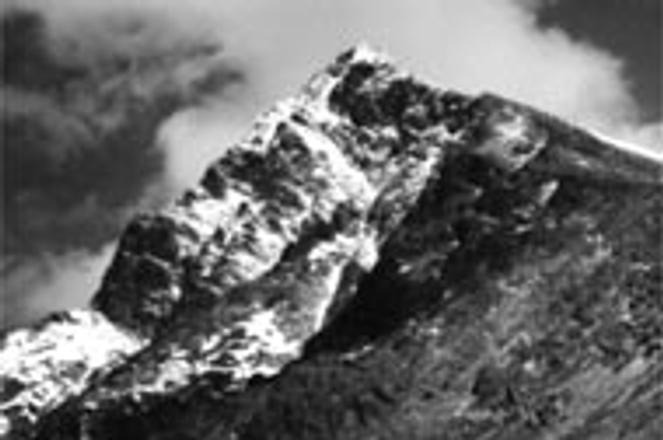KriváňTom Nicholson
Slovakia's 20 heller coin should bless its good luck. With so little to recommend it as real currency, it has (since 1993) been graced with the symbol of Slovak national consciousness - Mt. Kriváň. Granted, the imprint is unimpressive, resembling a hangnail rather than a mountain peak. But if you've ever been to the village of Podbanské in the West Tatras, you'll have seen Kriváň in the flesh and understood why it has cast such a powerful spell over generations of Slovaks.
Podbanské is more a collection of cottages than a traditional Slovak village. It, like Kriváň, lies on the border between the High Tatra and West Tatra mountain chains, but unlike some of the better-known resort spots such as Štrbské Pleso, is never overrun with tourists at any time of the year. The local pub still sells cold draft beer for 12 Sk, and most cottages have neither telephone nor electricity.
Two hotels are hidden away from the main road from Liptovský Hradok - Hotel Permon, a decorously international affair, and the less swanky Hotel Kriváň. Visitors who prefer to rough it more thoroughly can rent a nearby cottage and study their maps by gaslight. But the accommodation in Podbanské, like the McDonald's in Prague, is not what draws tourists. Hiking in Slovakia just doesn't get any better than here.
Several quiet valleys of the pristine Tatra National Park (TANAP) are easily accessible from Podbanské - Kamenistá Dolina (Rocky Valley), Tichá Dolina (Quiet Valley) and Kôprová Dolina (Dill Valley), the last of which winds through the foothills of Mount Kriváň. The mountain itself is a daunting sight, clearly visible from most points, so visitors may well decide that a valley hike holds enough excitement for one day.
Each valley trail follows a mountain river through old coniferous forest. The routes can be long but are rarely difficult, usually leading upwards to a pass at around 2,000 meters. Mountain bikes can be rented from Hotel Permon for 30 Sk an hour, and give visitors access to some of the more remote passes and uplands.
On the other hand, Kôprová Dolina is particularly wild and unspoiled, and the valley's Kmetôv Vodopád (Chieftain Waterfalls) are an attractive alternative to more arduous destinations for people with a limited range.
The Holy Grail
But it is neighboring Kriváň that catches the eye from Podbanské. The mountain is unusual for the Tatra region in that it can be climbed by anyone with a sturdy pair of legs and ten hours to spare. After all, Slovak national icons Ľudovít Štúr and Jozef Miloslav Hurban both made it to the top in the 19th century, and they were poets.
Hikers have a choice of two ascent routes, the longer and steeper originating in Podbanské, and the gentler starting in Štrbske Pleso. Both routes are physically challenging, but thankfully there are no sections where lengths of slippery chain represent the only way past dangerous obstacles.
And the view is spectacular - for more than two hours of the trek climbers are above the treeline, gawking at the miniature world below them and stumbling on the flinty paths.
The top of the mountain, at 2,494 meters, is cold, windy and exhilarating. Kriváň lies on the western edge of the High Tatras, so you get a good view of all of Slovakia's highest peaks as well as of the West Tatra chain on the other side.
With these facts in mind, hikers are advised to bring a camera and warm, waterproof clothing. The Tatras are beautiful but fickle, and every year take their toll of tourists unprepared for sudden changes in the weather.
The trip back down to Podbanské is no less stunning than the ascent, only easier on the lungs and heart. Several hours will see the weary traveller home and sipping hot grog in front of the pub, contemplating Kriváň's evening silhouette.
Kriváň's appeal is beyond personification. The mountain neither frowns nor broods over Podbanské. It doesn't glower, tower or soar, either. It is what many big mountains are - a silent altitude, a place a little closer either to the sun or to fiercely bad weather.
It lies in one of the few places left in Europe that are not buried beneath an urban sprawl, that do not ring with the din of development or reek of human habitation. It smells instead of water, rock and cloud, and from the barren summit you can see a long, long way.



